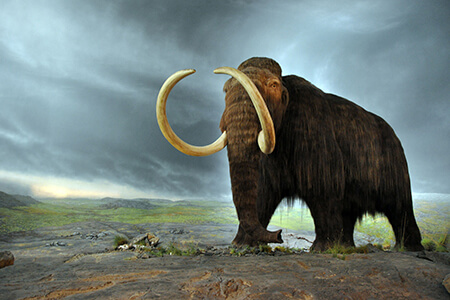This is a lesson summary. The full lesson can be viewed by purchasing an online course subscription.
Learning Objective
In this lesson we will learn how evidence for the theory of evolution is provided by a range of scientific disciplines.
Learning Outcomes
By the end of this lesson you will be able to:
- Describe how the fossil record shows changes in species over time.
- Illustrate how anatomical similarities and differences between species reflect their evolutionary relationships.
- Discuss how the distribution of fossils and living organisms relates to their evolutionary origins.
- Explain how studies of DNA support the idea of a single common ancestor and provide a mechanism for novel forms.

(Image: ktsdesign, Adobe Stock)
Lesson Summary
- Evidence for evolution can be divided into several categories:
- The fossil record.
- Comparative anatomy.
- Biogeography.
- Molecular biology.
- The fossil record reveals how species have changed over time, and includes ancestral species and transitional forms.
- Comparative anatomy shows that there is a continuum of relatedness between species, based on their anatomical structures.
- Homologous structures are body parts with a common evolutionary origin, that have diversified due to adaptation to different environments.
- They are examples of divergent evolution.
- Analogous structures are body parts with separate evolutionary origins, that have a similar form or function due to adaptation to similar environments.
- They are examples of convergent evolution.
- Vestigial structures are body parts which no longer have a function but persist as ‘remnants’ of evolution.
- Comparative embryology shows that there are more similarities between organisms in early stages of development, including structures that disappear before full development in some species.
- Biogeography shows that organisms that existed before the breakup of the supercontinents are found across continents that later separated, while organisms that evolved after the breakup of the supercontinents are limited to certain continents.
- It also shows that the longer groups of organisms have been separated, the more diverse and unique they tend to be as they have had more time to evolve.
- Molecular biology has revealed that the structure of DNA and the genetic code are the same for all organisms, thus suggesting a single common ancestor for all life on Earth.
- DNA sequencing shows that the more closely related organisms are, the more similar their DNA sequences.
- It also reveals gene duplication within organisms as a mechanism for evolutionary change.

(Image: Flying Puffin, Wikimedia Commons)
(Header image: midobun2014, Adobe Stock)
